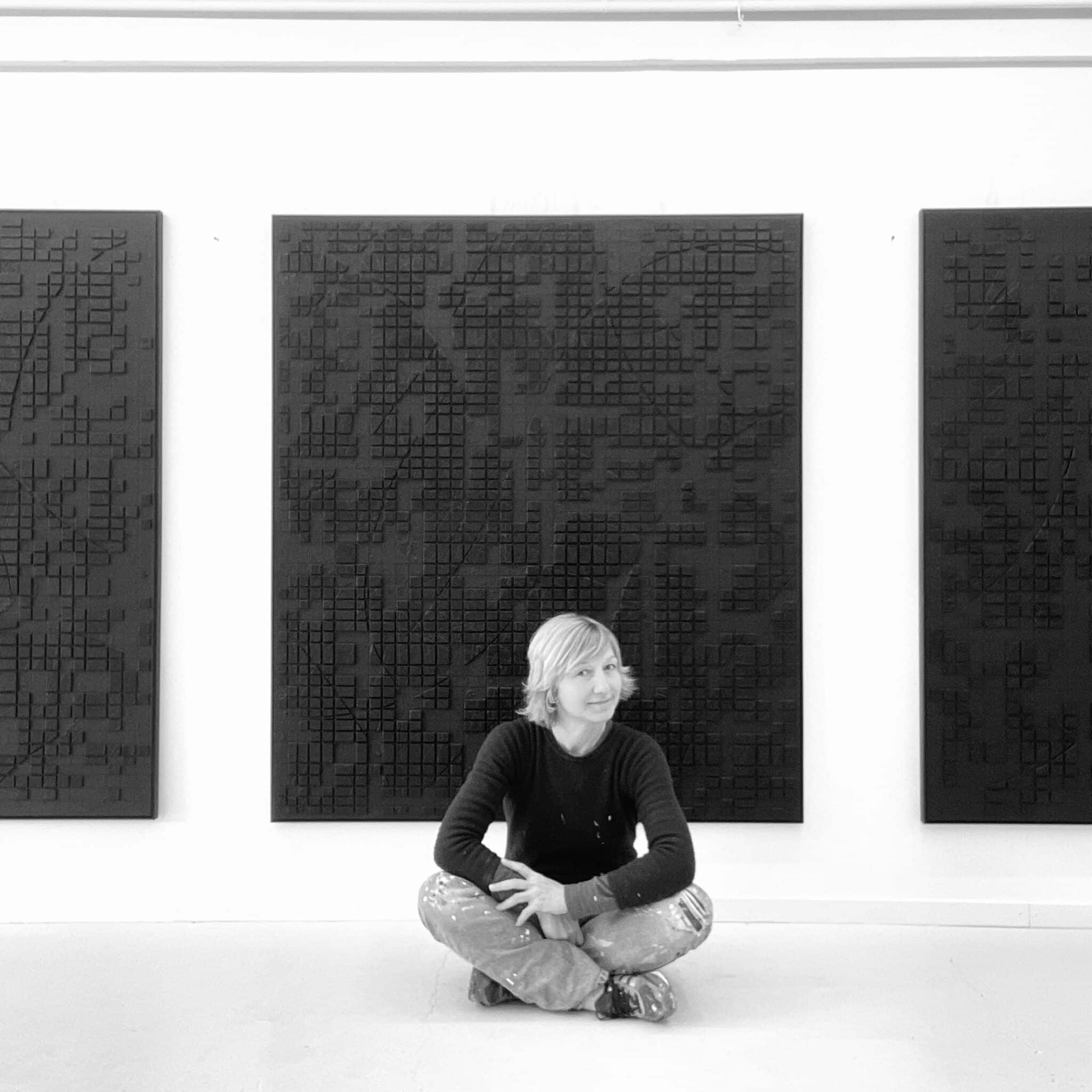ANNE-SOPHIE ØGAARD CONJUNCTIONS

What you see is what you see in Anne-Sophie Øgaard’s work – but it might change appearance. Yellow, green, blue, black and white works, large-scale pieces and series of monochromatic works on rows. There is no changing of colours in Øgaard’s monochrome paintings, but the appearance does change, light and colour transition depending on how you position yourself in front of the paintings.
Canvas, colour and forms, those are the primary components of Øgaards paintings but Øgaard nevertheless poses and proposes the question of where painting ends and where sculpture begins. Her starting point is the two-dimensional surface, and she considers her works to be paintings. However, paintings in an expanded field with colour, shape, and space as the central features. The pieces create an illusion of being paintings while inviting us as beholders to experience them as sculptures. The materials used are sand, cement and plaster and the process is physical, reducing forms to basic structures. It is the interplay between the additive and subtractive with a distinctive aim of gaining more by adding less. Squares and rectangles in a meticulous grid with furrowed wavy lines across the matrix are the backdrop and the abstract motif at stake, but light and the relation between the positive and negative space are the actual points of interest to the artist. Light as a determining factor in how the particular work is perceived. The environment, where the works are installed, the changing strength of natural light or a given light source play a significant role in the changing perception of the works. A balanced energy where the conjunctions of construction, deconstruction and reconstruction of the surface determine the final piece. Where the three-dimensional sculpture qualities are revealed.
Øgaard’s work is inscribed in a minimal abstract language, which took shape in the 1960s with artists such as Frank Stella, Carmen Herrera, Donald Judd and Anne Truitt among others. The minimalist artists attempted to explore the essential elements of visual features without reference to any reality outside the formal experiments.
– Natalia Gutman
